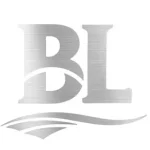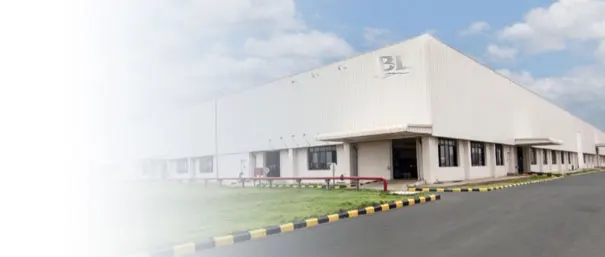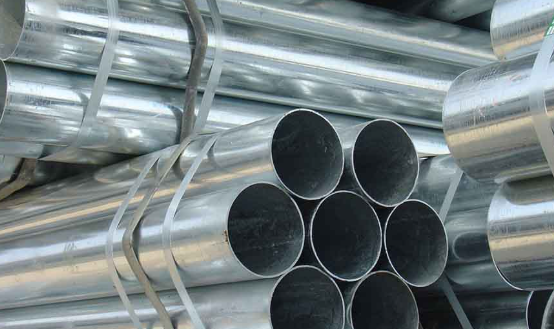Structural galvanized pipes play a pivotal role in modern construction where predictable load-bearing capacity, proven fire resistance, and assured code compliance are non-negotiable. By combining the mechanical robustness of steel with the corrosion protection of zinc, these pipes deliver long service life in demanding environments—coastal projects, industrial plants, agricultural buildings, or high-traffic commercial structures. This article provides a technical, SEO-friendly overview of design considerations, testing methods, standards references, and practical selection tips, with actionable guidance for engineers, contractors, and procurement professionals seeking reliable performance.


1) Fundamentals of Structural Galvanized Pipes
Structural galvanized pipes are typically produced in accordance with recognized standards such as ASTM A53/A500, EN 10255/10240, BS EN 10219 (for structural hollow sections), and ISO standards for hot-dip galvanizing. The galvanized coating—commonly applied via hot-dip processes—forms a metallurgically bonded zinc-iron layer, providing sacrificial protection and barrier defense against corrosion. For load-bearing applications, engineers specify grade, wall thickness, and diameter according to structural requirements and environmental exposure classes.
- Base steel grades: Common choices include ASTM A500 Grade B/C, S235–S355 (EN), or equivalent national grades, balancing yield strength (235–355 MPa typical) and weldability.
- Coating: Typical hot-dip galvanized coatings range from ~55 to 120 μm depending on steel chemistry, bath parameters, and specification (e.g., ISO 1461).
- Geometry: Round, square, and rectangular hollow sections (RHS/SHS/CHS) are selected based on bending axis, connection details, and architectural constraints.
2) Load-Bearing Capacity: Methods, Parameters, and Practical Sizing
Load-bearing capacity is governed by the section properties (area, moment of inertia, section modulus), material yield strength, effective length, end conditions, and local buckling resistance. For compression members, Euler buckling and inelastic buckling criteria are critical; for bending members, lateral-torsional buckling and local flange/web slenderness must be checked. In design practice, international codes (e.g., AISC 360, Eurocode 3 EN 1993, GB codes in China) define resistance equations and safety factors.
Below is a compact reference table with typical ranges used in preliminary selection. Final design requires project-specific calculations and code checks.
| Parameter | Typical Range / Note | Design Impact |
|---|---|---|
| Yield Strength (fy) | 235–355 MPa (structural grades) | Higher fy increases axial and bending capacity |
| Elastic Modulus (E) | ~200 GPa for carbon steel | Controls stiffness, deflection, buckling |
| Wall Thickness (t) | Typically 2.0–16 mm (application-dependent) | Affects local buckling and section modulus |
| Slenderness (KL/r) | Check against code limits (e.g., <200 typical) | Governs column compressive strength |
| Corrosion Allowance | Usually minimized by galvanizing | Maintains long-term capacity |
Designers often apply interaction equations for combined axial and bending effects (N-M interaction) and conduct connection checks (welds/bolts) to ensure load transfer without premature failure. For seismic regions, ductility and detailing rules (e.g., compact sections, development length, weld quality) are indispensable.
3) Fire Resistance of Galvanized Steel Pipes
Bare steel softens at elevated temperatures: around 500–600°C, strength and stiffness reduce markedly. Galvanizing itself does not serve as a high-temperature fireproofing system; it primarily protects against corrosion at ambient and moderate temperatures. For load-bearing assemblies, achieving fire ratings (e.g., 60, 90, 120 minutes) typically requires applied fire protection such as intumescent coatings, gypsum encasement, or concrete fill in hollow sections.
- Intumescent coatings: Expand under heat to insulate steel, enabling targeted fire resistance ratings.
- Concrete-filled tubes (CFT): Improve axial capacity and fire resistance by combining confinement and thermal mass.
- Fire design checks: Use temperature–time curves (ISO 834, ASTM E119), reduction factors for yield strength and modulus, and verify stability under load during fire exposure.
A best-practice workflow is to specify the structural capacity at ambient conditions and then verify an equivalent fire design using recognized methods (tabulated data, calculation models, or fire tests). Coordination between structural engineers and fire-protection specialists ensures coatings or encasements are compatible with galvanized surfaces and site application conditions.
4) Code Compliance and Standards Alignment
Compliance begins with material certification and continues through fabrication, erection, and inspection. Common touchpoints include:
- Material and coating: ASTM A53/A500, EN 10219 (structural), EN 10240/ISO 1461 (hot-dip), plus mill test certificates (MTC) verifying chemistry and mechanicals.
- Structural design: AISC 360/ASD-LRFD, EN 1993 (Eurocode 3), GB 50017, local building codes referencing these standards.
- Welding and QA/QC: AWS D1.1, ISO 9606, ISO 3834; NDT as required (VT, UT, MT).
- Fire compliance: ASTM E119/EN 13381 series, local fire codes and rating requirements specified by authorities having jurisdiction.
Documentation should include design calculations, coating thickness reports, WPS/PQR/WPQ for welding, inspection records, and traceable labeling. Maintaining this package streamlines approvals and audits.
5) Corrosion Performance and Life-Cycle Value
Hot-dip galvanizing creates a continuous zinc layer that sacrifices itself to protect exposed steel. In rural atmospheres, service life to first maintenance can exceed several decades; in marine or industrial zones, periodic inspections and touch-ups extend longevity. The life-cycle benefit stems from reduced repainting, fewer shutdowns, and sustained structural reliability. Where aesthetics matter, duplex systems (galvanizing plus compatible paint) provide enhanced durability and color consistency.
For procurement teams aiming to align with both cost and sustainability goals, galvanized systems often reduce total cost of ownership compared to uncoated or solely painted steel—especially when access for maintenance is difficult.
6) Selection Guide: From Concept to Procurement
When choosing structural galvanized pipes, tune parameters to project priorities:
- Define loads and boundary conditions: axial forces, bending moments, shear, buckling lengths, and dynamic effects.
- Pick section geometry: CHS for aesthetics and torsional uniformity; RHS/SHS for flat connection surfaces and efficient bending about principal axes.
- Specify steel grade and thickness: align with target capacity; check slenderness limits for local buckling.
- Determine galvanizing standard and coating thickness: consider environment classification and expected life to first maintenance.
- Plan fire protection strategy: intumescent, encasement, or CFT based on required minutes rating and architectural constraints.
- Ensure code-compliant fabrication and inspection: welding qualifications, NDT, thickness tests, and documentation.
Quick KPI Snapshot (Indicative)
- Typical coating thickness: 70–100 μm (project-specific; verify per ISO 1461 or equivalent)
- Expected rural service life: 30–60+ years to first maintenance
- Strength grades commonly specified: 235–355 MPa yield
7) Installation, Weldability, and Connection Detailing
Galvanized pipes are weldable; however, procedures must account for zinc. Best practices include proper surface preparation in the weld zone, adequate ventilation, and using qualified WPS that manage potential zinc volatilization. Post-weld touch-up with zinc-rich paints ensures continuous protection. Bolted connections benefit from predictable slip factors when surfaces are prepared consistently; designers should specify hole tolerances, splice geometries, and torque procedures to maintain stiffness and alignment.
For site logistics, store pipes off the ground with drainage to avoid trapped moisture. Prevent dissimilar metal contact in aggressive environments or isolate with appropriate gaskets to mitigate galvanic coupling.
8) Sustainability and Quality Assurance
Structural galvanized systems contribute to sustainability through extended service life, fewer recoating cycles, and robust recyclability at end-of-life. Quality assurance should cover raw material traceability, coating bath controls, thickness testing (per ISO 1461, ASTM A123/A153 where applicable), and dimensional checks. A complete QA dossier accelerates compliance sign-off and reduces project risks.
9) Why Source from BaoLi Iron & Steel Co., Ltd
BaoLi Iron & Steel Co., Ltd is a China-based manufacturer focused on delivering high-quality steel solutions worldwide. We provide a comprehensive portfolio covering stainless, carbon, and galvanized steel in plates, wires, pipes, bars, and coils. Our strength lies in customization—dimensions, grades, and performance tuned to your project—supported by experienced technical teams who guide product selection, applications, and compliance. With strict quality control and end-to-end global service, we aim for 100% customer satisfaction, from engineering support to on-time delivery.
For teams specifying structural galvanized pipes, our engineers can assist with grade selection (e.g., S355/ASTM A500), coating strategies, and documentation aligned to your target code. Explore our product range of galvanized steel pipes here:
galvanized steel pipes
and here:
galvanized steel pipe.
10) Practical Checklist for Engineers and Buyers
- Confirm governing code and target fire rating early in design.
- Select section geometry and grade to meet axial, bending, and buckling criteria with margin.
- Specify galvanizing standard, coating thickness, and QA tests; plan for on-site touch-ups.
- Detail connections for constructability; coordinate weld procedures for galvanized surfaces.
- Choose a supplier with proven certification, MTC traceability, and global logistics support.
Note: While galvanized coatings are ideal for corrosion resistance, they do not replace engineered fire protection for load-bearing members. Always verify fire design separately.
Conclusion
Structural galvanized pipes offer an optimal balance of strength, durability, and cost-effectiveness. When properly engineered for load-bearing capacity, complemented with suitable fire protection, and documented to meet code compliance, they deliver long-lasting performance across diverse construction scenarios. By partnering with a reliable manufacturer like BaoLi Iron & Steel Co., Ltd—backed by customization, technical support, and rigorous quality control—project teams can streamline specification, mitigate risk, and achieve consistent results from concept to commissioning.



